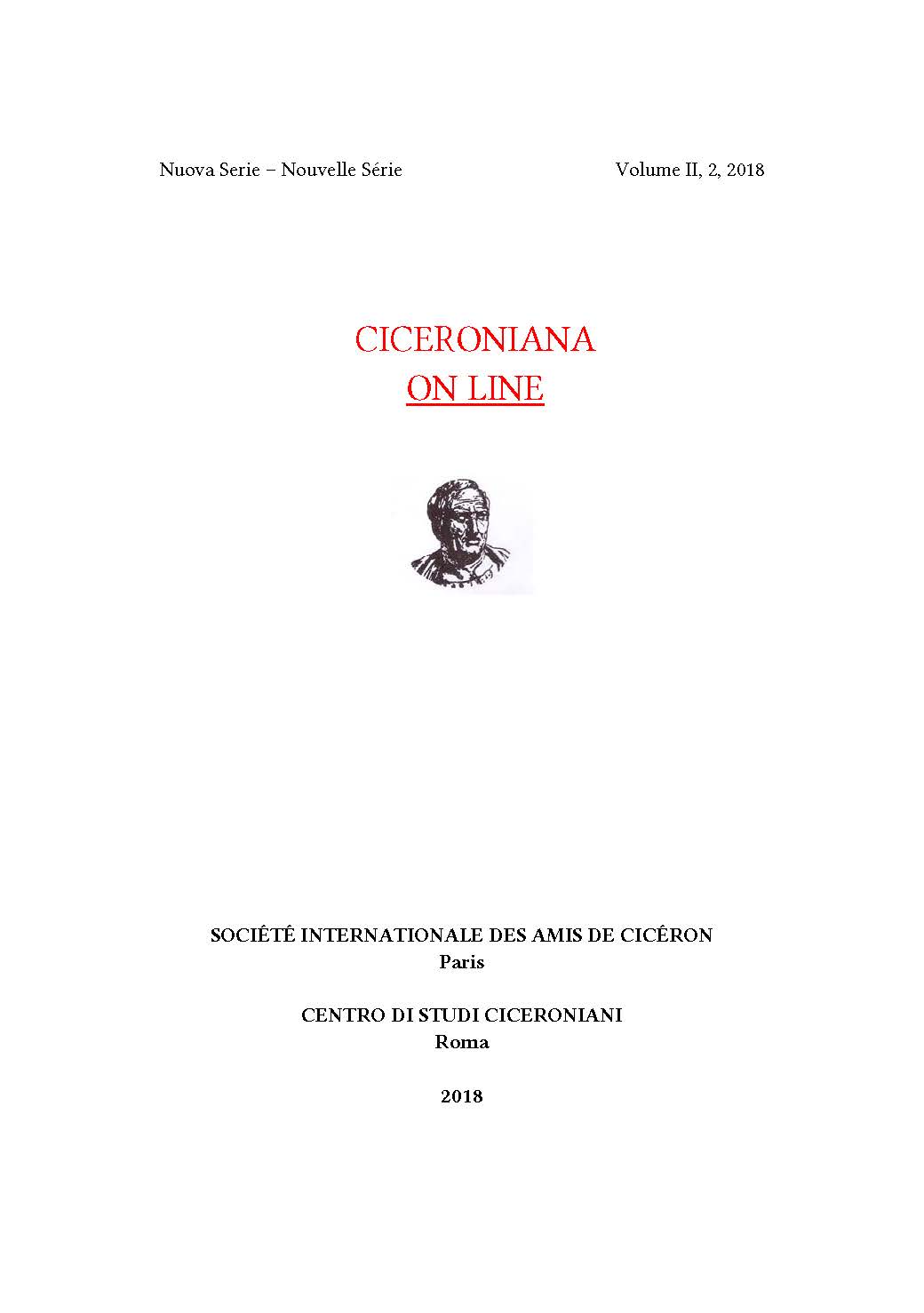Oltre il topos letterario: il locus amoenus come spazio vissuto nei dialoghi ciceroniani - Beyond the Literary Topos: the Locus Amoenus as Inhabited Space in Cicero's Dialogues
DOI:
https://doi.org/10.13135/2532-5353/3027Abstract
This paper seeks to examine the existential significance of the description of place in Cicero’s works. Descriptions of the locations in which philosophical dialogues are set serve more than an ornamental function, adding an essential element to the discourse. The presence of loci amoeni in the dialogues’ frames constitutes a generic sphragis for the philosophical dialogue, as these loci are imbued with an atmosphere that identifies them as lived spaces. In view of the lack of ancient perspectives on the perception of space, my reading draws on recent phenomenological theories to investigate this theme. The possibility of deploying this modern lens to interpret the ancient material is granted by the transhistorical nature of the object of our study, as characterised in the phenomenological literature: place is not a cultural product, subject to the change, but something universal that concerns an essential aspect of human life.
Il contributo mira a mettere in luce il valore esistenziale che può assumere
la descrizione di un luogo nell’opera ciceroniana. Le descrizioni dei luoghi in
cui sono ambientati i dialoghi filosofici non sono meramente ornamentali, ma
aggiungono qualcosa di essenziale al discorso. La presenza dei loci amoeni nelle
cornici non solo costituisce una sphragis di genere per il dialogo filosofico, poiché
essi possiedono anche un’atmosfera che li connota come spazi vissuti. Pur
nell’assenza di una riflessione antica sulla percezione dello spazio, tale aspetto
può essere indagato attraverso l’apporto di riflessioni recenti di stampo fenomenologico.
La possibilità di impiegare strumenti moderni per leggere l’antico è data dal carattere stesso dell’oggetto di indagine: non un prodotto culturale, soggetto al mutamento del tempo, ma un universale che concerne un aspetto essenziale della vita umana.
Cet article vise à mettre en lumière la valeur existentielle qui peut prendre
la description d’un lieu dans l’oeuvre cicéronienne. Les descriptions des lieux où
se déroulent les dialogues philosophiques n’ont pas une valeur simplement ornementale,
mais elles apportent quelque chose d’essentiel au discours: le locus amoenus n’est pas employé seulement comme une vraie sphragis pour le genre du dialogue philosophique, mais il est aussi porteur d’une atmosphère qui lui confère un caractère d’espace vécu. En dépit de l’absence d’une réflexion antique sur la perception de l’espace, cet aspect peut être analysé grâce aux modernes réflexions nées de la phénoménologie. L’emploi de catégories modernes pour lire les classiques est justifié par l’objet même de la recherche: non pas un produit culturel, sujet à l’évolution, mais un universel qui concerne un aspect essentiel
de la vie humaine.
Downloads
Downloads
Published
How to Cite
Issue
Section
License
Authors who publish with this journal agree to the following terms:
- Authors retain copyright and grant the journal right of first publication with the work simultaneously licensed under a Creative Commons Attribution License that allows others to share the work with an acknowledgement of the work's authorship and initial publication in this journal.
- Authors are able to enter into separate, additional contractual arrangements for the non-exclusive distribution of the journal's published version of the work (e.g., post it to an institutional repository or publish it in a book), with an acknowledgement of its initial publication in this journal.


 Ciceroniana On Line is recognised by ANVUR (the National Agency for the Evaluation of the University System and Research) as a CLASS A journal for the Sciences of Antiquity, Philology, Literature and History of Art (
Ciceroniana On Line is recognised by ANVUR (the National Agency for the Evaluation of the University System and Research) as a CLASS A journal for the Sciences of Antiquity, Philology, Literature and History of Art ( The journal is included in DOAJ. The DOAJ listing of the journals is available at
The journal is included in DOAJ. The DOAJ listing of the journals is available at  The journal is indexed in
The journal is indexed in  The journal has been included in ERIH PLUS. The ERIH PLUS listing of the journals is available at
The journal has been included in ERIH PLUS. The ERIH PLUS listing of the journals is available at 

